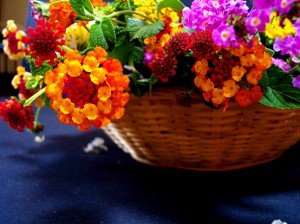
Have you ever seen a package of flowers in the refrigerated section of the grocery store and wondered why on earth they were mixed in with the food?
Well, aside from making a meal look more aesthetically appealing, flowers can be yet another way to gather food from your garden. Or for those with an adventurous streak, flowers can be a special prize while foraging for wild food, either for fun or as a necessity during an emergency.
In this article, we’ll give you some basic tips on foraging for edible flowers. To learn more about foraging in general, visit the Insight article
Survival 101: Foraging for Edible Plants.
6 Dos and Don’ts of Flower Foraging
Before your first flower foraging expedition, you should obtain reliable resources to be your guide and provide accurate images of edible flowers in your area. Try
Field Guide to North American Edible Wild Plants or a regional field guide specific to your area.
Having a field guide can go a long way in helping you know which flowers are safe to eat, and which you should leave alone.
Along with doing your own research, here are some specific dos and don’ts when it comes to foraging and eating the pretty companions to wild greenery:
1.
Do: Only eat flowers you are 100% certain are edible; it’s not worth the risk
2.
Do: Perform the
Universal Edibility Test if you’re not sure a flower is edible. This test requires you to separate the parts of a plant, test it on your skin, cook if possible, and hold it on your tongue, waiting for adverse reactions. Always look for plants growing in abundance. If a plant is growing in large abundance, it's more likely to not be poisonous.
3.
Do: Avoid flowers that may have been treated with pesticides, or that grow on the side of the road, come from nurseries (unless guaranteed organic) or are near any other contaminated areas.
4.
Do: Watch out for bees, hives, and other animals
5.
Don’t: Eat the flowers before removing the pistils and stamens (the middle portion of the flower, along with any parts sticking out of the center, as pictured below). These are the central ovule and pollen producing parts of the flower that can make the taste bitter or undesirable.
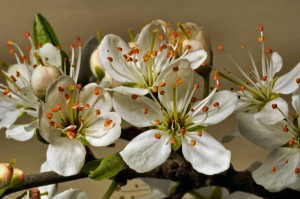
The Stamen and Pistils of a flower
It’s ok to eat the stems, petals, and leaves of most flowers, but consult a guidebook for how to properly cook and eat each part of the flower.
6.
Don’t: Eat flowers if you have severe allergies.
6 Edible Flowers you should know when foraging
Here are some common edible flowers to memorize if you’re ever in an emergency that requires you to eat edible plants:
1)
Dandelions: This one is obvious, but begs to be included because the yellow flowers are easily recognizable. Most people have them in abundance, and treat them like pests when they creep up on the lawn, but the leaves, roots and flowers are edible, and you can use the unopened buds to make Appalachian Style Fried Dandelions, on
allrecipes.com.
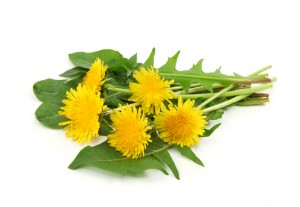
2)
Japanese Honeysuckle: Honeysuckles in general can be tricky, since there are many species of honeysuckle, and some are poisonous. Some have edible and poisonous parts on the same plant, so in this case it is very important to know your stuff. The Japanese Honeysuckle stores a sweet nectar in its base that can be accessed after proper identification of the distinct white and yellow flowers. For a tutorial on extracting the nectar, follow this link: www.instructables.com/id/Honeysickle%3A-Harvesting-the-Sweet-Nectar-of-Life/.

3)
Fireweed: This plant also has many edible parts, but the flowers, stems, and leaves are best in the spring when they are fresh. They can be found in woods, along hills, and beside fresh water or oceans in cold climates. An interesting fact about fireweed is that it grows in areas that have been burned. The seeds are not destroyed in the fire, but can germinate after the fact.
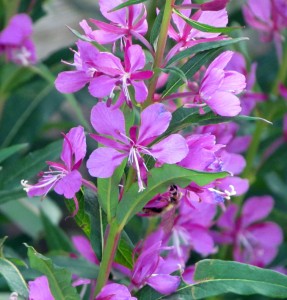
4)
Garlic grass: The alliums have many great, wild varieties, and most carry that lovely garlic smell. For garlic grass specifically the thin stems give way to light, purplish blossoms, resembling the bloom of a chive flower in shape. Much like the grocery store variety, they can be used on many savory items you wish to spice up, such as a salad or meat dish. They are a great wild replacement for chives or scallions.
5)
Red Clover: round, purple, tube-like flower petals can be eaten raw or steeped for tea. Pull the petals off and sprinkle them over a salad, or try this
Mixed Berry Pie recipe and serve with a sprinkling of clover to top it off.
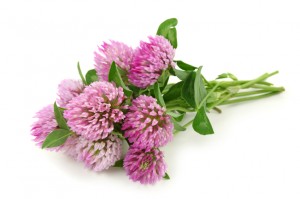
6)
Trillium: The Trillium is a single-flowered branch plant that has three white petals that turn pink as the plant ages. You can Replace Trillium around stream banks or also on the forest floor in open or deep woods.
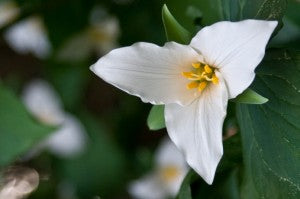
If you want to cultivate your own edible flowers in your garden there are many choices you could plant to explore the culinary possibilities. These options include, but are not limited to
- Squash and zucchini flowers
- Pansies
- Lavender
- The flowers of many herbs, such as chives
- Flowering thyme and basil
- Violets
- Roses
- Water Lillies
Each flower has its own benefits and rules for planting and harvesting, so be sure to be as careful and knowledgeable in your own garden as you would be in the wild.
Happy hunting!
Sources:
www.goodhousekeeping.com/home/gardening/weeds-edible-plants-0409#slide-1
http://homecooking.about.com/library/weekly/blflowers.htm
/insight/13423/survival-101-foraging-for-edible-plants/
http://adventure.howstuffworks.com/universal-edibility-test1.htm
http://whatscookingamerica.net/EdibleFlowers/EdibleFlowersMain.htm
www.allrecipes.com/recipe/fried-dandelions-appalachian-style/
www.wildernessarena.com/food-water-shelter/food-food-water-shelter/food-procurement/edible-wild-plants/fireweed
www.instructables.com/id/Honeysuckle%3A-Harvesting-the-Sweet-Nectar-of-Life/
http://readynutrition.com/resources/edible-flowers-42-varieties-to-add-to-your-garden_09022014/
http://adventure.howstuffworks.com/universal-edibility-test1.htm
http://www.garden.org/ediblelandscaping/?page=edible-flowers
http://www.fs.usda.gov/detail/ipnf/maps-pubs/?cid=fsm9_019160
http://www.motherearthnews.com/nature-and-environment/foraging-edible-plants-zmaz82mjzglo.aspx#axzz38PTxNtc5
The Sense of Survival by Alan J. South








1 comment
Myrrda
When I was a child we used nasturtium blossoms in salads and soups